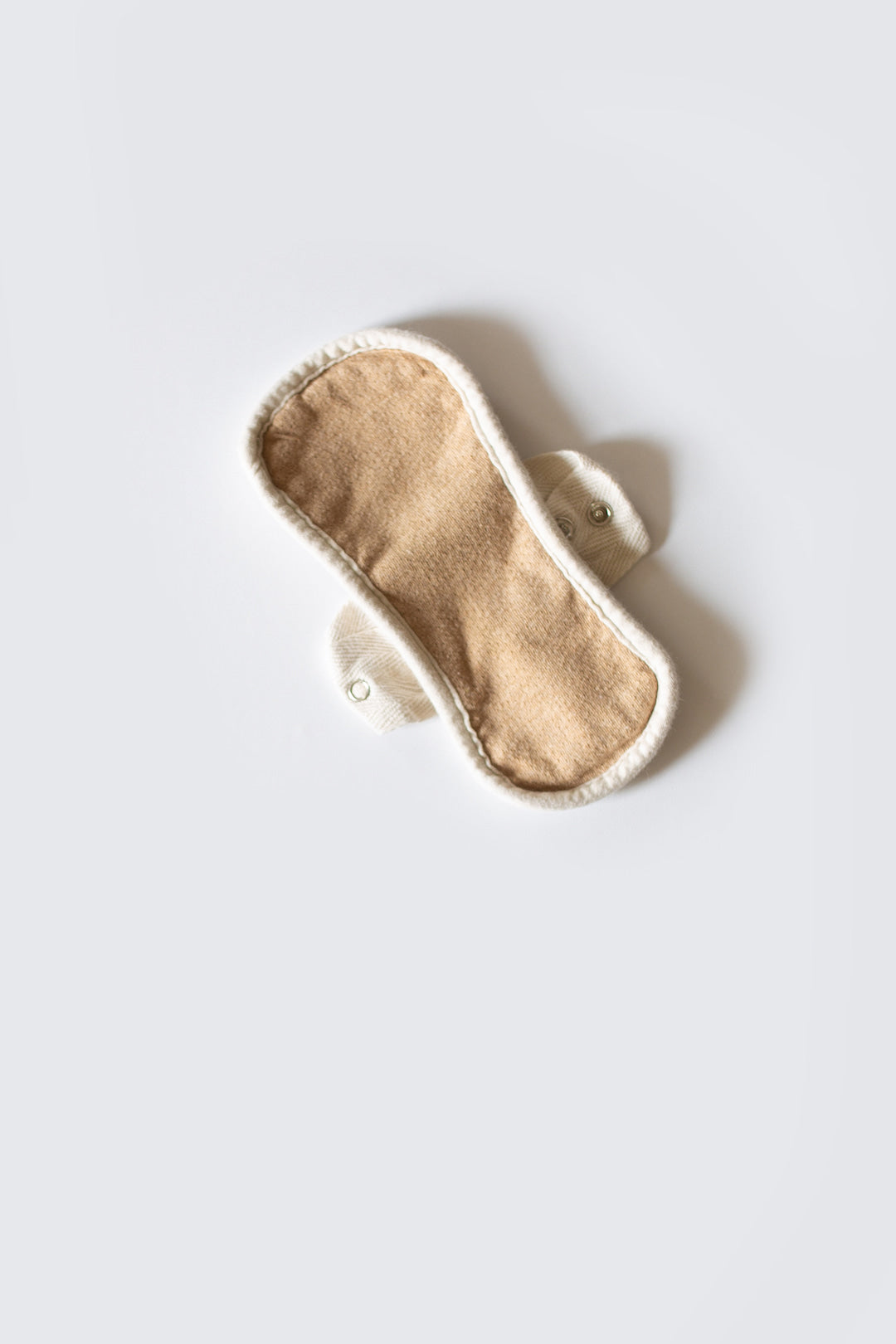Every woman's menstrual cycle is different. Some of us are like clockwork, others more sporadically. But it's probably safe to say that we, as women, menstruate roughly every month, for roughly 5–7 days, for roughly 30–40 years. That’s a significant portion of our lives—resulting in thousands of tampons and pads being used, thrown away, and sitting in landfills for hundreds of years. Not to mention, those conventional products often contain chemicals and synthetic fragrances that aren't exactly great for our intimate areas.
Fortunately, we live in a time when sustainable and health-conscious options are becoming more mainstream. In a recent post, I talked about menstrual cups and how they’ve changed the game for many women. But today, I want to highlight two other alternatives that are getting a lot of well-deserved attention: period underwear and reusable cloth pads.
These products are gaining popularity not just for their environmental benefits, but also for comfort, health, and cost-effectiveness. So let’s break it down.
What’s So Great About Period Underwear?
To begin with, modern period underwear has come a long way from the bulky, diaper-like versions you might imagine. Many of today’s designs look nearly identical to regular underwear. And that’s important—when you’re already dealing with cramps, bloating, or mood swings, the last thing you need is to feel frumpy or awkward in unflattering period gear. These underwear are thoughtfully designed with style and comfort in mind.
But the real magic is in the lining. Period underwear features a multi-layer absorbent fabric that can trap menstrual fluid and prevent leaks—some even advertise protection equivalent to two or three tampons. They can be worn alone on light days or as backup on heavier ones.
Is period underwear reusable? Absolutely. Most pairs are washable and designed to last for years with proper care, which makes them not only eco-friendly but budget-friendly as well.
Some users also report experiencing less cramping when using period underwear compared to tampons. That could be due to avoiding internal products, which sometimes cause discomfort. They’re also a great choice for overnight protection, especially since tampons shouldn’t be worn for more than eight hours at a time.
What Are the Downsides?
Now, let’s be real. Period underwear is great—but it’s not a magic solution for everyone. If you have a very heavy flow, these may not offer all-day protection on their own. In such cases, many women use them in tandem with other products or save them for lighter days.
Another thing to consider is odor. Similar to pads, the absorbed blood can develop an odor over time if not changed regularly. And yes, cleaning them does require a little effort. You’ll need to rinse them out promptly and either hand-wash or toss them in the washing machine—ideally separate from your other clothes, especially during heavy-flow days.
And while some brands offer lacy or stylish options, they may still fall short of your expectations. So if you're very particular about your undergarments, that might be a consideration.
Reusable Cloth Pads: An Old Favorite, Reimagined
Reusable cloth pads have been around in some form for centuries, but they’ve been modernized significantly in recent years. Like period underwear, they’re eco-conscious, gentle on the skin, and often made with organic or non-toxic materials. You can find them in various sizes and absorbency levels—from panty liners to overnight protection—which gives them a slight edge in versatility.
In terms of function, they’re essentially like traditional pads but made of cloth and with snap buttons to keep them in place. Many users prefer them for heavy-flow days or overnight use because they’re more absorbent than most period underwear. Unlike disposable products, they don't contain synthetic materials, which can be irritating or even harmful over time. It’s worth noting that reusable period pads are safe when washed and cared for properly—just as safe, if not safer, than disposable pads.
So, what should you choose if you’re new to the world of reusable menstrual products? I’d suggest starting with a reusable menstrual pads starter kit, which typically includes different sizes and absorbencies, so you can test what works best for your flow. They’re a great way to dip your toes in without fully committing.
Comparing Options: Which Is Best?
So let’s talk comparisons.
Period panties vs reusable pads is a common debate. While both serve the same purpose—absorb menstrual flow—period underwear is more discreet, since it doesn’t require an extra product. However, pads (especially reusable ones) can be swapped out during the day without changing your entire undergarment.
Both period underwear and reusable pads are designed to be washed and reused, often for years, which significantly reduces waste.
While period panties may feel more modern and streamlined, cloth pads can be more absorbent and easier to switch out. Similarly, if you’re comparing reusable pads vs period underwear, the decision may come down to lifestyle—if you're out and about all day and don’t want to carry an extra pair of underwear, pads may be the more convenient choice.
Bottom Line
Ultimately, there’s no one-size-fits-all when it comes to menstrual products. Your flow, comfort level, lifestyle, and even your laundry schedule will all play a role in determining what’s best for you.
The good news is that there are more sustainable, affordable, and body-friendly options than ever before. Whether you choose reusable cloth pads, period underwear, or a mix of both, you’re taking a small but meaningful step toward reducing waste, protecting your health, and feeling more empowered during your cycle.
Give yourself grace as you experiment. You don’t need to make the switch overnight. But even replacing a few disposable products each month with reusable alternatives can make a big impact—not just for the planet, but for your peace of mind.




